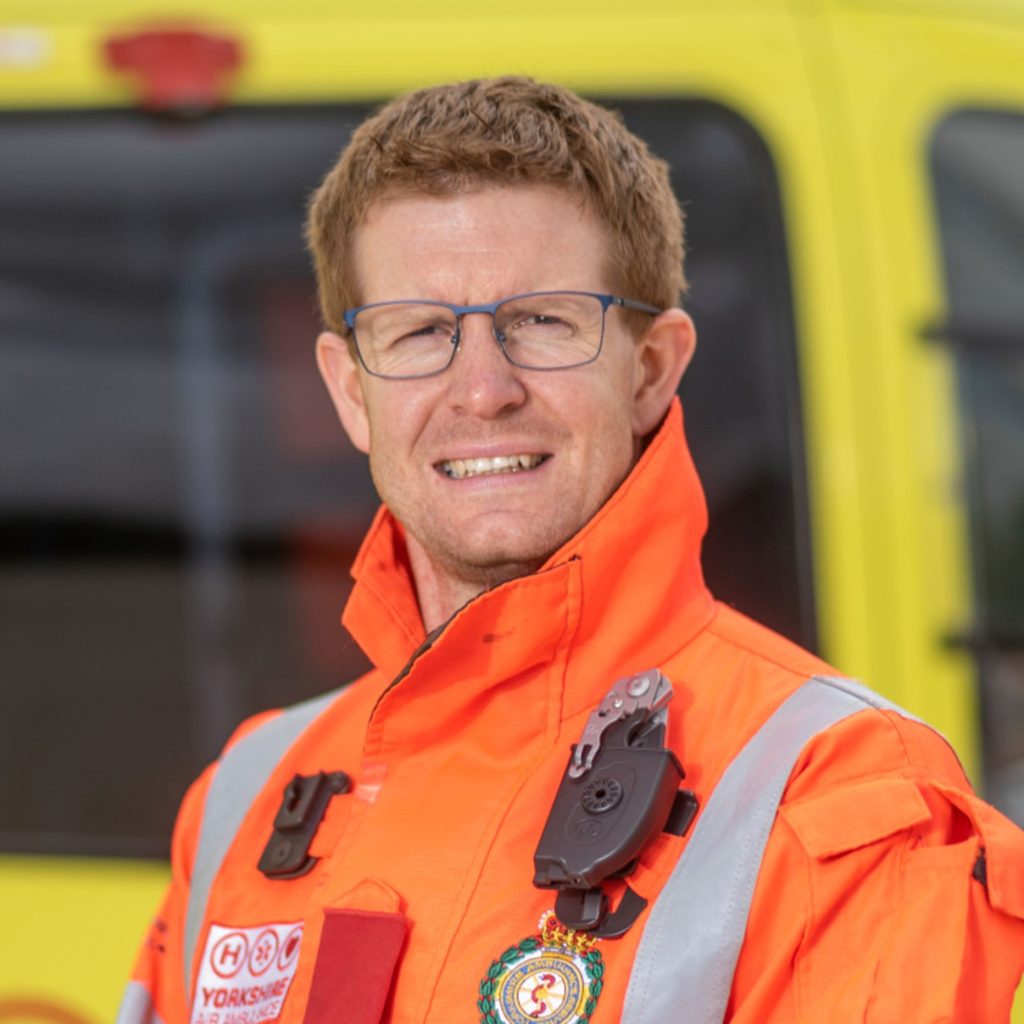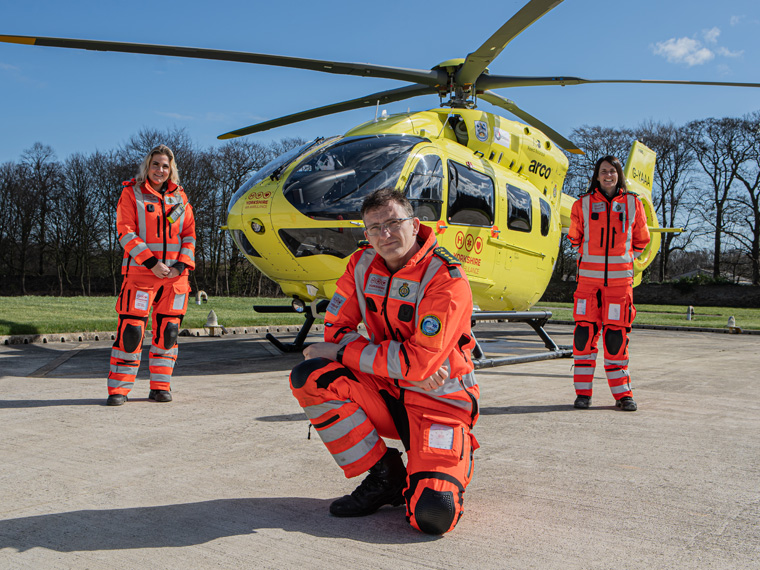As we celebrate National Doctors Day, we wanted to shine a spotlight on the incredible work of those who take their skills to the skies to save lives across Yorkshire. We spoke with Paul Onion, a seven-year veteran of the YAA team, to hear about the challenges and rewards of this unique and vital role.

Can you tell us about your educational and professional background, and how you became a Yorkshire Air Ambulance Doctor?
While at school, many years ago, I really liked the idea of working as a Paramedic, however, I was always torn between that and working as an Emergency Medicine Doctor within a Hospital. Following 6 years at The University of Leeds, I began working as a fully qualified Doctor in 2002.
I worked across all different areas and practices of medicine to gain wider experience including; surgery, medicine, paediatrics, intensive care, anaesthetics and finally a year working with the Yorkshire Ambulance Service completing sub-specialty training in Pre-Hospital Emergency Medicine. (PHEM)
In addition to this I have worked voluntary for the ambulance service and a local critical care service since 2010. This has allowed me to gain additional experience in the often-challenging pre-hospital environment attending a whole range of patients.
After almost 15 years of training, I was offered a consultant role with the fantastic YAA team in 2017.
How does your role differ from that of a traditional emergency department Doctor?
The advancements in pre-hospital care on the air ambulance means we are now able to deliver the same treatments and interventions to patients that they would receive during their first hour in an emergency department.
This ensures people are getting the same life-saving treatment usually delivered in the resuscitation area of the emergency department.
This includes delivering emergency anaesthetic, blood transfusions, advanced analgesia (painkillers) and even “open heart surgery” for penetrating chest injuries. In the emergency department the above treatments would usually be delivered by a trauma team consisting of 10 people however, we are trained to such a high level, we can give the same treatments in teams of 2 or 3 at scene with the air ambulance.
What are some of the biggest challenges you face when providing medical care in the air ambulance setting?
There are several differences which make working outside of a hospital setting more challenging.
The most obvious is the environment and working in potentially windy and cold conditions often in muddy field or steep hillsides. Working on roadsides can also be particularly loud meaning communication between the team can be more difficult. In particular, working at night has huge challenges when treating critically injured patients. Comparing this to a warm and light environment within the emergency resuscitation room.
The team is very small on the helicopters, and working in remote locations can often mean we are working with just a Doctor, Paramedics, and assistance from the Pilot if the ground ambulance is unable to reach the scene. This can have its challenges when the patient needs multiple treatments delivering in a time-critical period. We are lucky that, despite this, we are able to invest in regular training at the base in the custom-built training suite to be prepared for such jobs.
In addition, treating patients while in flight can be difficult as our flight helmets reduce noise to such an extent that we cannot hear the patient, alarms on monitors or use a stethoscope to listen to the patient’s chest. We therefore aim to have fully treated the patient on the ground prior to loading them into the helicopter for a flight to hospital.
Can you describe a particularly challenging or memorable case you have worked on as an air ambulance doctor?
We attend lots of challenging and memorable jobs but perhaps the most challenging are those involving children – especially with having two children myself.
A particularly difficult case I can recall was when we attended a child who had been hit by a car. He was incredibly unwell, and it was a very emotional at the scene with his all his family and friends present.
He required emergency anaesthetic and a blood transfusion along with treatment for multiple limbs injuries.
By far the best part of this job and the job overall was meeting him and his family again afterwards when he visited us at our air base, especially seeing as that he had made such an amazing recovery.
How do you manage the stress and emotional toll of providing emergency medical care in high-pressure situations?
Although the situations were exposed to are challenging, we have trained for many years to try to ensure that the emotions on scene are kept under control to allow full focus on delivering emergency treatment.
This said we are all human and some jobs, especially those with poor outcomes for the patient, can be especially difficult when talking to relatives.
Outside of work I’m kept so busy with two young children who like outdoor adventures and I also enjoy going on long runs to clear my mind and keep fit!
How do you stay up to date with advancements in medical technology and procedures relevant to your role as an air ambulance doctor?
Part of being an air ambulance doctor involves staying up to date with, and pushing the boundaries of, the latest medical advances.
Most of the skills are learnt in the hospital setting through continual training in simulated environments. The key is deciding which of these advances can be adapted to use on the air ambulance and the speed of use, the size of the equipment in the aircraft and the benefit it brings to the patient that all needs to be considered.
What advice would you give to someone considering a career as an air ambulance doctor?
Go for it! The years of school, university and medical training are all worth it in the end – I promise!
The job is incredibly rewarding whilst also being very challenging. It gives a great sense of achievement to know that as a team we bring lifesaving and life changing to treatment to the people of Yorkshire. You never go to the same job or same area twice which gives huge variety to the job too.
—
We cannot thank Paul enough for taking the time to share his experiences with us.
His commitment to his patients and passion for his work is nothing short of inspirational, and we are grateful for the opportunity to highlight the crucial role that he and his colleagues play in keeping our region safe.
We wish Paul and the entire Yorkshire Air Ambulance team of doctors continued success in their lifesaving efforts and thank them for their service to us all.
Over 8,500 people across Yorkshire have received lifesaving care by the quick action of Yorkshire Air Ambulance service over the past 23 years. For further information or to donate today, please visit www.yaa.org.uk.


